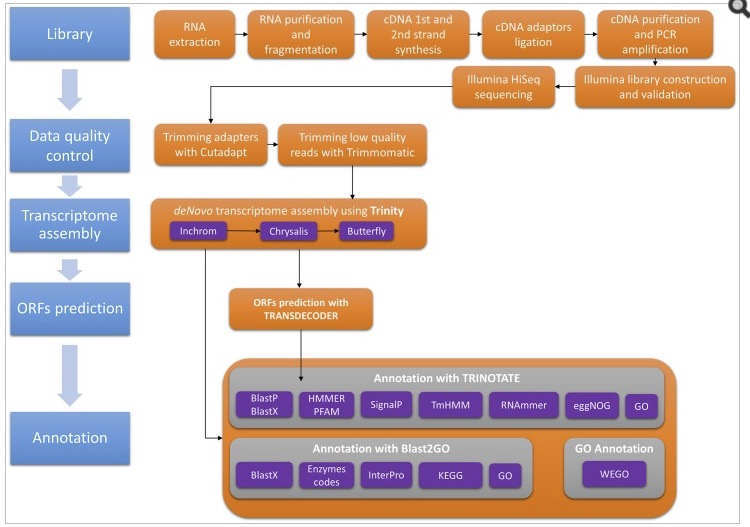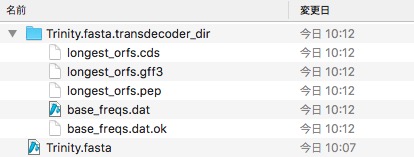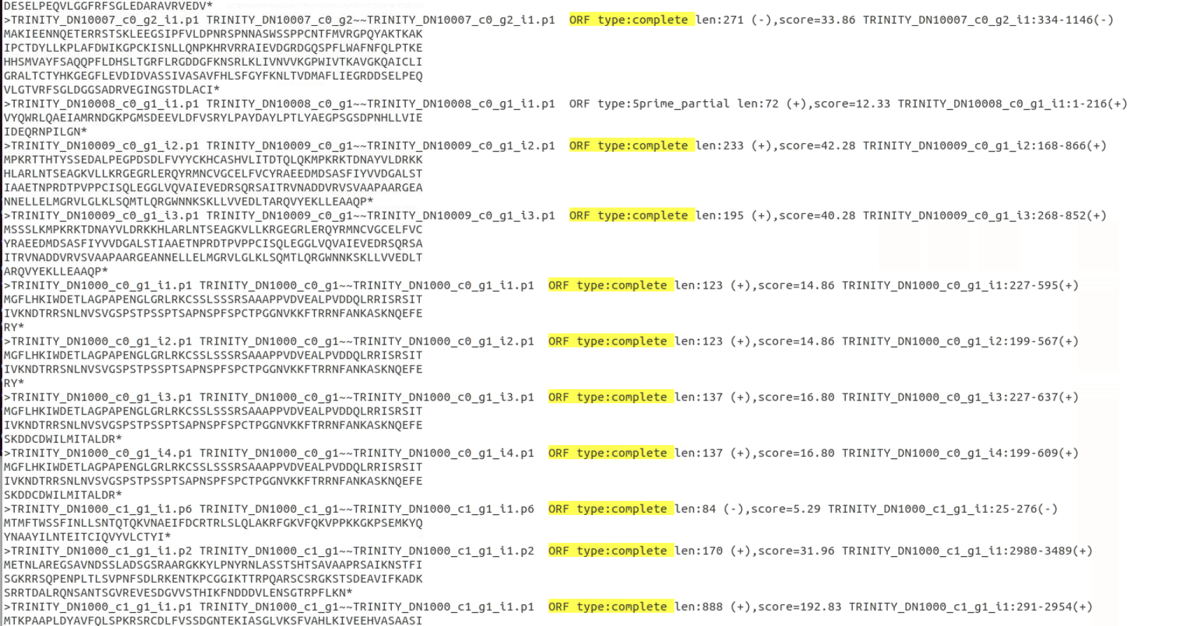2019/11/3 condaインストール追記
2019/11/24 help追記
2022/1/5 helpのバージョン更新
2023/03/01 docker 追記
配列間の相同性関係を同定することは生物学的研究にとって基本である。 ここで本著者らはオルソロググループ推論アルゴリズムにおける以前には検出されていない遺伝子長バイアスを解決するOrthoFinderと呼ばれる新規なアルゴリズムを提供する。この結果、精度が著しく改善される。 実際のベンチマークデータセットを使用して、OrthoFinderが他の推論法よりも8%から33%正確であることを示す。 さらに、本発明者らは、植物中の転写因子遺伝子ファミリーの完全な分類を提供することによってOrthoFinderの有用性を実証し、これまでに観察されていない690万の関係を明らかにする。
公式のGithubにとても丁寧な説明があるので、そちらをご覧ください。
OrthoFinder/OrthoFinder-manual.pdf at master · davidemms/OrthoFinder · GitHub
簡単に言えば、blastを全部のfaaファイルに対して実行して(BLAST all-versus-all)、それでオーソロガスなタンパク質を検出している。そのため、比較するfaaファイルの数に応じて計算時間が累乗で増えていく。そして全てのオルソロググループに対してルート付きの系統樹を推定し、それらのツリーにおけるすべての遺伝子重複を特定することができる。比較ゲノム解析のための統計も出力される。
OrthoFinder公式サイト
http://www.stevekellylab.com/software/orthofinder
インストール
#bioconda (link) python2.7 (python3 supported)
mamba install orthofinder -c bioconda -y
#homebrew
brew install OrthoFinder
> orthofinder
OrthoFinder version 2.5.4 Copyright (C) 2014 David Emms
SIMPLE USAGE:
Run full OrthoFinder analysis on FASTA format proteomes in <dir>
orthofinder [options] -f <dir>
Add new species in <dir1> to previous run in <dir2> and run new analysis
orthofinder [options] -f <dir1> -b <dir2>
OPTIONS:
-t <int> Number of parallel sequence search threads [Default = 128]
-a <int> Number of parallel analysis threads
-d Input is DNA sequences
-M <txt> Method for gene tree inference. Options 'dendroblast' & 'msa'
[Default = dendroblast]
-S <txt> Sequence search program [Default = diamond]
Options: blast, diamond, diamond_ultra_sens, blast_gz, mmseqs, blast_nucl
-A <txt> MSA program, requires '-M msa' [Default = mafft]
Options: mafft, muscle
-T <txt> Tree inference method, requires '-M msa' [Default = fasttree]
Options: fasttree, raxml, raxml-ng, iqtree
-s <file> User-specified rooted species tree
-I <int> MCL inflation parameter [Default = 1.5]
-x <file> Info for outputting results in OrthoXML format
-p <dir> Write the temporary pickle files to <dir>
-1 Only perform one-way sequence search
-X Don't add species names to sequence IDs
-y Split paralogous clades below root of a HOG into separate HOGs
-z Don't trim MSAs (columns>=90% gap, min. alignment length 500)
-n <txt> Name to append to the results directory
-o <txt> Non-default results directory
-h Print this help text
WORKFLOW STOPPING OPTIONS:
-op Stop after preparing input files for BLAST
-og Stop after inferring orthogroups
-os Stop after writing sequence files for orthogroups
(requires '-M msa')
-oa Stop after inferring alignments for orthogroups
(requires '-M msa')
-ot Stop after inferring gene trees for orthogroups
WORKFLOW RESTART COMMANDS:
-b <dir> Start OrthoFinder from pre-computed BLAST results in <dir>
-fg <dir> Start OrthoFinder from pre-computed orthogroups in <dir>
-ft <dir> Start OrthoFinder from pre-computed gene trees in <dir>
LICENSE:
Distributed under the GNU General Public License (GPLv3). See License.md
CITATION:
When publishing work that uses OrthoFinder please cite:
Emms D.M. & Kelly S. (2019), Genome Biology 20:238
If you use the species tree in your work then please also cite:
Emms D.M. & Kelly S. (2017), MBE 34(12): 3267-3278
Emms D.M. & Kelly S. (2018), bioRxiv https://doi.org/10.1101/267914
テストラン
ソースコードの中のテストデータを実行。4生物のタンパク質データ (.faa) がある。
git clone https://github.com/davidemms/OrthoFinder.git
cd OrthoFinder/
orthofinder -f Tests/Input/ExampleDataset -t 8
Statistics_Overall.csvに結果がまとめられている。
kazumaxneo$ column -t -s',' Results_Aug01/Statistics_Overall.csv |head -20
Number of genes 2733
Number of genes in orthogroups 1938
Number of unassigned genes 795
Percentage of genes in orthogroups 70.9
Percentage of unassigned genes 29.1
Number of orthogroups 536
Number of species-specific orthogroups 7
Number of genes in species-specific orthogroups 102
Percentage of genes in species-specific orthogroups 3.7
Mean orthogroup size 3.6
Median orthogroup size 4.0
G50 (assigned genes) 4
G50 (all genes) 4
O50 (assigned genes) 199
O50 (all genes) 298
Number of orthogroups with all species present 278
Number of single-copy orthogroups 254
Date 2017-08-01
Orthogroups file Orthogroups.csv
Unassigned genes file Orthogroups_UnassignedGenes.csv
2733遺伝子のうち1938でオルソログが見つかったと出ている。
公式のdockerイメージが用意されている。
https://hub.docker.com/r/davidemms/orthofinder
docker pull davidemms/orthofinder:latest
#help(v2.5.4)
docker run -it --rm davidemms/orthofinder:2.5.4 -h
#proteomeのfastaファイルが配置された1つ上のディレクトリに移動する
cd proteome_seqs/../
#dockerのrun。下のコマンドだとdiamondのall versus all blastが実行される。
docker run --ulimit nofile=1000000:1000000 -it --rm -v /<full_path>/<to>/<curret_path>:/input davidemms/orthofinder:2.5.4 orthofinder -f /input/proteome_seqs/
-M msaもつけると、MAFFTによる多重整列、FastTree による樹木推定まで実行される。タンパク質FASTAファイルの拡張子は".fa、.faa、.fasta、.fas、.pep"が自動で認識される。比較するfaaファイルの数に応じて計算時間が累乗で増えていくことと、メモリ使用量も増えることに注意。植物の250ゲノムのproteomeでは、256GBメモリでは足りなかった。
出力例

Orthogroups/にあるOrthogroups.GeneCount.tsvが各オルソロググループに属する遺伝子の数をまとめた行列ファイルになる。Gene_Trees/にはオルソログそれぞれの系統推定結果が配置されている。Orthogroup_sequences/にはオルソログの配列が配置されている。
3. Exploring OrthoFinder's results | OrthoFinder Tutorials
引用
OrthoFinder: solving fundamental biases in whole genome comparisons dramatically improves orthogroup inference accuracy
David M. Emms and Steven Kelly
Genome Biol. 2015; 16(1): 157. Published online 2015 Aug 6.
OrthoFinderを用いたOrthologous解析 - Qiita
関連
"-t 8"での計算時間は、バクテリアのfaaファイル5つで30分くらいかかった(mac pro 2009使用)。
2022 1/6 追記
最近のバージョンを使うとずっと早く計算は終わるようです。
古い説明
condaやbrewを使わない場合、1つずつ導入する。
- fastme #ここからbinaryダウンロード。
chmod u+x fastme-2.1.5/binaries/fastme-2.1.5-osx #実行権
mv fastme-2.1.5-osx fastme #rename
#パスを通すかパスが通っている場所に移動。
- pythonの依存 #ない人だけ
pip install numpy
pip install Shapely
pip install Matplotlib
- DLCpar ダウンロードリンク
#dlcpar-1.0.tarを解凍して中に入る。
sudo python setup.py install
- MCL
brew install MCL


























